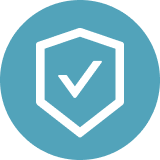Lean Six Sigma Yellow Belt - CPD








For help and assistance get in touch with us today
Overview
Make a Difference with Lean Six Sigma
The Lean Six Sigma Yellow Belt Certification is an entry-level, Ofqual-regulated qualification intended for aspiring process improvement specialists who wish to understand the fundamentals of six sigma tools, concepts, and methodology. This widely accepted certification is the benchmark for process improvement and quality management. A highly sought-after credential in the industry, you will be armed with the skills to meet high-quality customer standards and enhance processes. As a Yellow Belt holder, you will contribute to larger initiatives led by Green and Black Belt professionals. You will learn how to apply and implement Lean Six Sigma concepts effectively, even in supporting roles.
Yellow Belt Certification Highlights:
- Suitable for professionals from various industries and sectors.
- Globally recognised and Ofqual-regulated, ensuring adherence to rigorous qualification standards.
- Valued by leading organisations leading to career advancement in process improvement.
- Led by an expert Lean Six Sigma Practitioner who provides guidance on successfully passing the exam.
- Features a mock exam to reinforce understanding.
- Fully prepares learners for the Lean Six Sigma Yellow Belt exam.
- Opens up exciting career opportunities in process optimisation and organisational success.
Ofqual is England’s main government-appointed regulatory body, regulating school and college qualifications, and vocational and technical qualifications. (Detailed information is given below).
For help and assistance get in touch with us today
Why Study365
Take Your Career to the Next Level with Study365
Study365 offers the Lean Six Sigma Yellow Belt Certification, an excellent opportunity for learners to join the ranks of certified professionals in process improvement initiatives and quality management. We give all our learners 365-day online access, allowing them to learn without ever leaving their desks. At Study 365, we collaborate with renowned industry experts to provide you with superior learning material that is easy to grasp. Our mock exam feature empowers you to prepare for your official exam with confidence. Moreover, we take pride in our outstanding customer service and administrative support. With over a thousand positive reviews on Trustpilot, we are committed to providing you with the assistance and guidance to succeed.
- Access comprehensive video training and text materials.
- A dedicated personal tutor.
- Flexibility & convenience is a top priority.
- Receive 12 months of online access to our learning portal.
- Our friendly customer support team is available to answer your questions.
- 14 Days money back guarantee. (T & C apply).
- Interest-free instalment plans.
Course Curriculum
What You will Learn
| Introduction | |||
| Six Sigma Introduction | 00:16:00 | ||
| IASSC Certified Lean Six Sigma Black Belt Study Guide | |||
|
1
Six Sigma Yellow Belt |
|||
|
2
Define Phase |
|||
| Introduction | 00:03:00 | ||
|
3
Module 1.1 - The Basics of Six Sigma |
|||
| 1.1.1 Meanings of Six Sigma | 00:08:00 | ||
| 1.1.1 Meanings of Six Sigma – Lecture Note | |||
| 1.1.2 General History of Six Sigma & Continuous Improvement – Part 1 | 00:14:00 | ||
| 1.1.2 General History of Six Sigma & Continuous Improvement – Part 2 | 00:34:00 | ||
| 1.1.2 General History of Six Sigma & Continuous Improvement – Part 3 | 00:17:00 | ||
| 1.1.2 General History of Six Sigma & Continuous Improvement – Lecture Note | |||
| 1.1.3 Deliverables of a Lean Six Sigma Project | 00:17:00 | ||
| 1.1.3 Deliverables of a Lean Six Sigma Project – Lecture Note | |||
| 1.1.4 The Problem-Solving Strategy Y = f(x) | 00:11:00 | ||
| 1.1.4 The Problem-Solving Strategy Y = f(x) – Lecture Note | |||
| 1.1.5 Voice of the Customer, Business and Employee – Part 1 | 00:06:00 | ||
| 1.1.5 Voice of the Customer, Business and Employee – Part 2 | 00:29:00 | ||
| 1.1.5 Voice of the Customer, Business and Employee – Lecture Note | |||
| 1.1.6 Six Sigma Roles & Responsibilities – Part 1 | 00:12:00 | ||
| 1.1.6 Six Sigma Roles & Responsibilities – Part 2 | 00:29:00 | ||
| 1.1.6 Six Sigma Roles & Responsibilities – Part 3 | 00:35:00 | ||
| 1.1.6 Six Sigma Roles & Responsibilities – Lecture Note | |||
|
4
Module 1.2 - The Fundamentals of Six Sigma |
|||
| 1.2.1 Defining a Process – Part 1 | 00:13:00 | ||
| 1.2.1 Defining a Process – Part 2 | 00:26:00 | ||
| 1.2.1 Defining a Process – Part 3 | 00:29:00 | ||
| 1.2.1 Defining a Process – Lecture Note | |||
| 1.2.2 Critical to Quality Characteristics (CTQ’s) | 00:14:00 | ||
| 1.2.3 Cost of Poor Quality (COPQ) | 00:13:00 | ||
| 1.2.3 Cost of Poor Quality (COPQ) – Lecture Note | |||
| 1.2.4 Pareto Analysis (80:20 rule) | 00:12:00 | ||
| 1.2.4 Pareto Analysis (80:20 rule) – Lecture Note | |||
| 1.2.5 Basic Six Sigma Metrics – Part 1 | 00:10:00 | ||
| 1.2.5 Basic Six Sigma Metrics – Part 2 | 00:30:00 | ||
| 1.2.5 Basic Six Sigma Metrics – Part 3 | 00:14:00 | ||
| 1.2.5 Basic Six Sigma Metrics – Lecture Note | |||
|
5
Module 1.3 - Selecting Lean Six Sigma Projects |
|||
| 1.3.1 Building a Business Case & Project Charter | 00:37:00 | ||
| 1.3.1 Building a Business Case & Project Charter – Lecture Note | |||
| 1.3.2 Developing Project Metrics | 00:01:00 | ||
| 1.3.3 Financial Evaluation & Benefits Capture | 00:25:00 | ||
| 1.3.3 Financial Evaluation & Benefits Capture – Lecture Note | |||
|
6
Module - 1.4 The Lean Enterprise |
|||
| 1.4.1 Understanding Lean – Part 1 | 00:41:00 | ||
| 1.4.1 Understanding Lean – Part 2 | 00:31:00 | ||
| 1.4.1 Understanding Lean – Lecture Note | |||
| 1.4.2 The History of Lean | 00:10:00 | ||
| 1.4.2 The History of Lean – Lecture Note | |||
| 1.4.3 Lean & Six Sigma | 00:19:00 | ||
| 1.4.3 Lean & Six Sigma – Lecture Note | |||
| 1.4.4 The Seven Elements of Waste | 00:14:00 | ||
| 1.4.4 The Seven Elements of Waste – Lecture Note | |||
| 1.4.5 5S-hp (Sort, Straighten, Shine, Standardise, Self-Discipline) | 00:12:00 | ||
| 1.4.5 5S (Sort, Straighten, Shine, Standardise, Self-Discipline) – Lecture Note | |||
|
7
Measure Phase |
|||
| Introduction | 00:02:00 | ||
|
8
Module - 2.1 Process Definition |
|||
| 2.1.1 Cause & Effect / Fishbone Diagrams | 00:09:00 | ||
| 2.1.1 Cause & Effect / Fishbone Diagrams – Lecture Note | |||
| 2.1.2 Process Mapping, SIPOC, Value Stream Map | 00:10:00 | ||
| 2.1.2 Process Mapping, SIPOC, Value Stream Map – Lecture Note | |||
| 2.1.3 X-Y Diagram | 00:06:00 | ||
| 2.1.3 X-Y Diagram – Lecture Note | |||
| 2.1.4 Failure Modes & Effects Analysis (FMEA) | 00:15:00 | ||
| 2.1.4 Failure Modes & Effects Analysis (FMEA) – Lecture Note | |||
|
9
Module - 2.2 Six Sigma Statistics |
|||
| 2.2.1 Basic Statistics | 00:12:00 | ||
| 2.2.1 Basic Statistics – Lecture Note | |||
| 2.2.2 Descriptive Statistics | 00:16:00 | ||
| 2.2.2 Descriptive Statistics – Lecture Note | |||
| 2.2.3 Normal Distributions & Normality | 00:18:00 | ||
| 2.2.3 Normal Distributions & Normality – Lecture Note | |||
| 2.2.4 Graphical Analysis | 00:05:00 | ||
| 2.2.4 Graphical Analysis – Lecture Note | |||
|
10
Module - 2.3 Measurement System Analysis |
|||
| 2.3 Measurement System Analysis (MSA) | 00:07:00 | ||
| 2.3 Measurement System Analysis (MSA) – Lecture Note | |||
| 2.3.1 Precision & Accuracy | 00:17:00 | ||
| 2.3.1 Precision & Accuracy – Lecture Note | |||
| 2.3.2 Bias, Linearity & Stability | 00:09:00 | ||
| 2.3.2 Bias, Linearity & Stability – Lecture Note | |||
| 2.3.3 Gage Repeatability & Reproducibility | 00:18:00 | ||
| 2.3.3 Gage Repeatability & Reproducibility – Lecture Note | |||
| 2.3.4 Variable & Attribute MSA | 00:03:00 | ||
| 2.3.4 Variable & Attribute MSA – Lecture Note | |||
|
11
Module - 2.4 Process Capability |
|||
| 2.4.1 Capability Analysis | 00:37:00 | ||
| 2.4.1 Capability Analysis – Lecture Note | |||
| 2.4.2 Concept of Stability | 00:10:00 | ||
| 2.4.2 Concept of Stability – Lecture Note | |||
| 2.4.3 Attribute & Discrete Capability | 00:07:00 | ||
| 2.4.3 Attribute & Discrete Capability – Lecture Note | |||
| 2.4.4 Monitoring Techniques | 00:24:00 | ||
| 2.4.4 Monitoring Techniques – Lecture Note | |||
|
12
Control Phase |
|||
| Introduction | 00:02:00 | ||
| DMAIC Control Phase – Overview | 00:03:00 | ||
|
13
Module - 5.1 Lean Controls |
|||
| 5.1.1 Control Methods for 5S | 00:19:00 | ||
| 5.1.1 Control Methods for 5S – Lecture Note | |||
| 5.1.2 Kanban – Part 1 | 00:21:00 | ||
| 5.1.2 Kanban – Part 2 | 00:21:00 | ||
| 5.1.2 Kanban – Part 3 | 00:10:00 | ||
| 5.1.2 Kanban – Lecture Note | |||
| 5.1.3 Poka-Yoke (Mistake Proofing) | 00:13:00 | ||
| 5.1.3 Poka-Yoke (Mistake Proofing) – Lecture Note | |||
|
14
Module - 5.2 Statistical Process Control (SPC) |
|||
| 5.2 Statistical Process Control (SPC) Overview – Part 1 | 00:24:00 | ||
| 5.2 Statistical Process Control (SPC) Overview – Part 2 | 00:31:00 | ||
| 5.2 Statistical Process Control (SPC) Overview – Part 3 | 00:20:00 | ||
| 5.2 Statistical Process Control (SPC) – Lecture Note | |||
| 5.2.1 Data Collection for SPC – Part 1 | 00:27:00 | ||
| 5.2.1 Data Collection for SPC – Part 2 | 00:20:00 | ||
| 5.2.1 Data Collection for SPC – Lecture Note | |||
| 5.2.2 I-MR Control Chart | 00:10:00 | ||
| 5.2.2 I-MR Chart – Lecture Note | |||
| 5.2.3 Xbar-R Chart | 00:08:00 | ||
| 5.2.3 Xbar-R Chart – Lecture Note | |||
| 5.2.4 U Chart | 00:09:00 | ||
| 5.2.4 U Chart – Lecture Note | |||
| 5.2.5 P Chart | 00:07:00 | ||
| 5.2.5 P Chart – Lecture Note | |||
| 5.2.6 NP Control Chart | 00:06:00 | ||
| 5.2.6 NP Chart – Lecture Note | |||
| 5.2.7 Xbar-S Chart | 00:20:00 | ||
| 5.2.7 Xbar-S Chart – Lecture Note | |||
| 5.2.8 CuSum Chart | 00:05:00 | ||
| 5.2.8 CuSum Chart – Lecture Note | |||
| 5.2.9 EWMA Chart | 00:11:00 | ||
| 5.2.9 EWMA Chart – Lecture Note | |||
| 5.2.10 Control Methods | 00:16:00 | ||
| 5.2.10 Control Methods – Lecture Note | |||
| 5.2.11 Control Chart Anatomy | 00:13:00 | ||
| 5.2.11 Control Chart Anatomy – Lecture Note | |||
| 5.2.12 Subgroups, Impact of Variation, Frequency of Sampling | 00:25:00 | ||
| 5.2.12 Subgroups, Impact of Variation, Frequency of Sampling – Lecture Note | |||
| 5.2.13 Center Line & Control Limit Calculations | 00:17:00 | ||
| 5.2.13 Centre Line & Control Limit Calculations – Lecture Note | |||
|
15
Module - 5.3 Six Sigma Control Plans |
|||
| 5.3.1 Cost Benefit Analysis | 00:07:00 | ||
| 5.3.1 Cost Benefit Analysis – Lecture Note | |||
| 5.3.2 Elements of the Control Plan | 00:04:00 | ||
| 5.3.2 Elements of the Control Plan – Lecture Note | |||
| 5.3.3 Elements of the Response Plan | 00:05:00 | ||
| 5.3.3 Elements of the Response Plan – Lecture Note | |||
Our Expert Tutor
Learn from an Industry Expert
For help and assistance get in touch with us today
Learners Share their Success Stories
Eager and willing to share their experiences, our alumni have happily agreed to tell you their success story.
View user testimonialsNo Reviews found for this course.

No Reviews found for this course.









